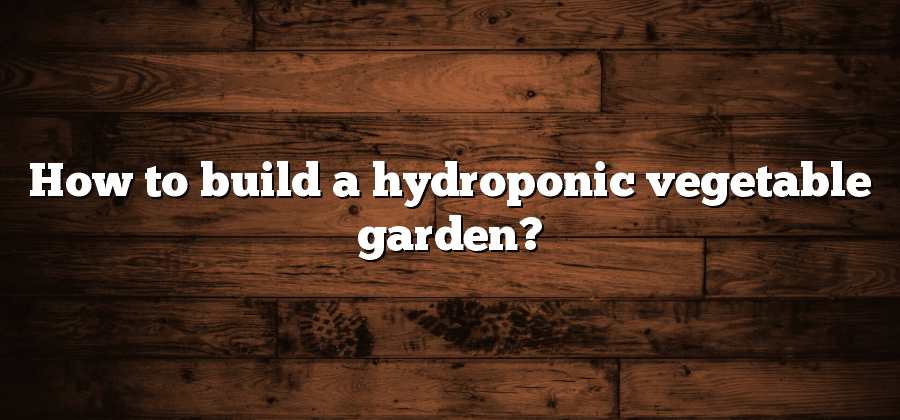Understanding Hydroponics and its Benefits
Hydroponics is a method of growing plants without soil, where nutrients are instead delivered directly to the roots through a nutrient-rich solution. This innovative technique offers numerous benefits for both commercial growers and home gardeners alike.
Firstly, hydroponics allows for more efficient use of resources, particularly water. Compared to traditional soil-based farming, hydroponics uses up to 90% less water. This is because the water in a hydroponic system is recirculated and reused, reducing waste. Additionally, the controlled environment of hydroponics minimizes the risk of water loss due to evaporation or runoff. Such water conservation is not only environmentally friendly but also economically advantageous for farmers and gardeners.
Selecting the Right Location for Your Hydroponic Garden
When it comes to setting up your hydroponic garden, selecting the right location is crucial for its success. The location you choose will directly impact the growth and productivity of your plants. One of the key factors to consider is the amount of sunlight the area receives. Ideally, you want a spot that gets at least 6-8 hours of sunlight per day. This will ensure that your plants receive the necessary amount of light to carry out photosynthesis effectively. Additionally, choose a location that is protected from harsh winds or extreme temperature fluctuations, as these can negatively impact the growth of your plants.
Another important factor to consider when selecting the location for your hydroponic garden is the availability of water and electricity. Hydroponic systems rely on a constant supply of water and nutrients, so it is crucial to choose a location with easy access to a water source. In addition, you will need access to electricity to power the water pumps and lighting systems of your hydroponic setup. Therefore, it is advisable to choose a location near an electrical outlet, or ensure that you have a reliable source of electricity nearby.
Remember, the location you choose for your hydroponic garden will play a significant role in the success of your plants. By considering factors such as sunlight, protection from elements, and access to water and electricity, you can ensure an optimal environment for your hydroponic garden to thrive. Now that we have discussed the importance of selecting the right location, let’s move on to the next crucial step – choosing the appropriate hydroponic system for your needs.
Choosing the Appropriate Hydroponic System for Your Needs
When it comes to selecting the appropriate hydroponic system for your needs, there are several factors to consider. Firstly, you need to determine the size of your desired garden and how much space you have available. If you have limited space, a vertical hydroponic system or a small-scale hydroponic system such as a nutrient film technique (NFT) system might be ideal. On the other hand, if you have ample space, you could opt for a larger scale system like a deep water culture (DWC) system or an aeroponic system.
In addition to space considerations, you also need to think about the types of plants you want to grow. Different hydroponic systems work better for certain types of plants. For example, if you want to grow leafy greens like lettuce or spinach, a nutrient film technique (NFT) system or a deep water culture (DWC) system would be suitable. However, if you want to grow vine crops like tomatoes or cucumbers, an aeroponic system or a Dutch bucket system might be a better choice. It is essential to understand the specific needs of the plants you intend to cultivate to ensure you select the appropriate hydroponic system for optimal growth and yield.
Essential Tools and Equipment for Building a Hydroponic Garden
Building a hydroponic garden requires the use of several essential tools and equipment that are crucial for the success of your cultivation. One of the most important tools is a pH meter, which helps you monitor and adjust the acidity or alkalinity of the nutrient solution. Maintaining the correct pH level is vital for the optimal growth of your plants. Additionally, a TDS meter, or a total dissolved solids meter, is essential for measuring the concentration of dissolved nutrients in the solution. This allows you to ensure that your plants are receiving the right amount of nutrients they need for healthy growth.
Another essential tool for building a hydroponic garden is a good quality lighting system. Since hydroponic gardens are typically grown indoors, providing adequate lighting is crucial for the photosynthesis process in plants. LED lights are a popular choice among hydroponic growers due to their energy efficiency and ability to provide the necessary spectrum of light for plant growth. In addition to lighting, a timer is also a necessary equipment that allows you to control the duration and intensity of light exposure for your plants. This is especially important as different plants have varying light requirements at different stages of growth.
Selecting the Best Vegetables for Hydroponic Cultivation
When it comes to selecting the best vegetables for hydroponic cultivation, there are a few factors to consider. First and foremost, you want to choose vegetables that have a compact growth habit, as this will allow for more plants to be grown in a limited space. Additionally, it is important to select vegetables that have a high yield and a relatively short growing cycle. This will ensure that you can harvest your crops in a timely manner and maximize your overall productivity.
One excellent choice for hydroponic cultivation is lettuce. Lettuce is a leafy green vegetable that grows quickly and can be harvested multiple times. It is also quite versatile, as there are various types of lettuce available, including romaine, iceberg, and arugula. Another great option is spinach, which is packed with nutrients and can be harvested at a young age for baby spinach leaves or left to mature for full-sized leaves. Additionally, herbs like basil and cilantro are great choices for hydroponic gardens, as they can be harvested continually and add a burst of flavor to any dish.






